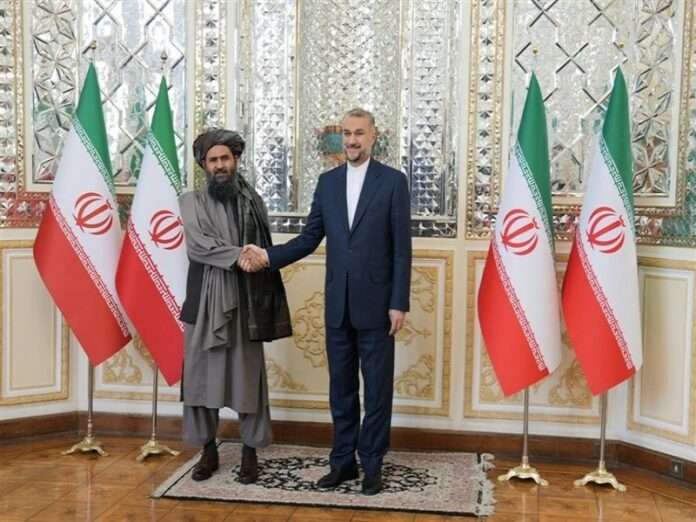Iran and the Taliban became embroiled in a bitter dispute over water rights earlier this spring that was analyzed here at the time, which warned that these continued tensions dangerously risked dividing-and-ruling the broader region to the US’ hegemonic benefit. They’ve evidently patched up their problems since then, however, as proven by the latest improvement in their ties over the past week. Here are three news items from Iran’s Tasnim News showing that tangible progress has been made in this respect:
* 6 November: “Afghanistan Eager to Expand Trade via Iranian Ports”
* 8 November: “Iran, Afghanistan to Expand Cooperation in Transport, Transit Sectors”
* 10 November: “Tehran, Kabul Plan to Raise Annual Trade to $10 Billion”
This outcome also benefits India and Russia, whose North-South Transport Corridor (NSTC) through Iran will now become the lifeline for the Afghan people and their war-torn economy. Furthermore, it comes as Pakistani-Taliban ties continue deteriorating due to their worsening security dilemma and Islamabad’s ongoing expulsion of the estimated 1.7 million Afghans illegally in its territory. The latest breakthrough in Iranian-Taliban relations therefore relieved Pakistani pressure upon Kabul to capitulate to its demands.
From India and Russia’s shared strategic perspective, it’s important to retain balance in Pakistani-Taliban relations so as to prevent the first from restoring what some observers had previously regarded as its disproportionate influence over the latter. Delhi’s reasons for this are self-explanatory while Moscow’s can be attributed to the downturn in ties with Islamabad since April 2022’s post-modern coup, after which their promising energy talks stalled and evidence emerged of Pakistan secretly arming Ukraine.
Over a year ago in August 2022, the visit of a Taliban delegation to Moscow led to the conclusion that this group envisions Russia playing a big role in their geo-economic balancing act aimed at averting the abovementioned scenario of Pakistan restoring its disproportionate influence over Afghanistan. Complementarily to that, connectivity was also pioneered with China via the Central Asian Republics, which altogether served to strengthen the Taliban’s strategic autonomy vis-a-vis Pakistan
Nevertheless, its geo-economic strategy still fell short of its full potential so long as ties with Iran remained troubled. These problems impeded mutually beneficial cooperation with the Islamic Republic and India further afield considering that the latter relies on the Iranian-transiting NSTC for trading with Afghanistan. The Taliban can now tap into these interconnected opportunities in order to optimize its balancing act and thus reduce the chances that it feels pressured to capitulate to Islamabad’s demands.
To be sure, continued Pakistani-Taliban tensions could be exploited by the US for divide-and-rule purposes just like Iranian-Taliban ones could have been had those two not recently patched up their problems, but at least progress was tangibly made in managing one of these Eurasian fault lines. The Taliban is now less likely to fall under the US’ sway out of desperation, while Pakistan’s US-influenced leverage over that group is now less influential than before due to the pressure relief provided by Iran.
The improvement of Iranian-Taliban relations therefore serves those two’s interests for obvious reasons, India’s and Russia’s like was explained in this analysis, as well as all responsible Eurasian stakeholders’ by decreasing the odds that the US can exploit Pakistani-Taliban tensions to divide-and-rule the region. That’s not to say that it’ll give up trying, nor that it might not achieve some success with time, but just that the latest economic-strategic dynamics will make it comparatively more difficult than before.
